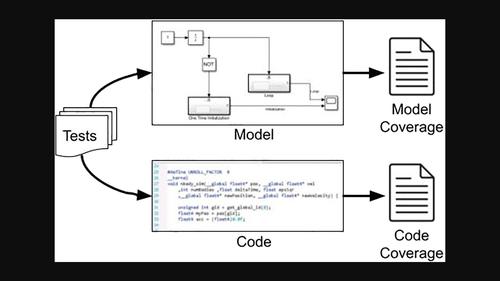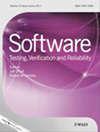On transforming model‐based tests into code: A systematic literature review
IF 1.2
4区 计算机科学
Q3 COMPUTER SCIENCE, SOFTWARE ENGINEERING
引用次数: 0
Abstract
Model‐based test design is increasingly being applied in practice and studied in research. Model‐based testing (MBT) exploits abstract models of the software behaviour to generate abstract tests, which are then transformed into concrete tests ready to run on the code. Given that abstract tests are designed to cover models but are run on code (after transformation), the effectiveness of MBT is dependent on whether model coverage also ensures coverage of key functional code. In this article, we investigate how MBT approaches generate tests from model specifications and how the coverage of tests designed strictly based on the model translates to code coverage. We used snowballing to conduct a systematic literature review. We started with three primary studies, which we refer to as the initial seeds. At the end of our search iterations, we analysed 30 studies that helped answer our research questions. More specifically, this article characterizes how test sets generated at the model level are mapped and applied to the source code level, discusses how tests are generated from the model specifications, analyses how the test coverage of models relates to the test coverage of the code when the same test set is executed and identifies the technologies and software development tasks that are on focus in the selected studies. Finally, we identify common characteristics and limitations that impact the research and practice of MBT: (i) some studies did not fully describe how tools transform abstract tests into concrete tests, (ii) some studies overlooked the computational cost of model‐based approaches and (iii) some studies found evidence that bears out a robust correlation between decision coverage at the model level and branch coverage at the code level. We also noted that most primary studies omitted essential details about the experiments.

关于将基于模型的测试转换为代码:系统的文献综述
基于模型的试验设计越来越多地应用于实践和研究中。基于模型的测试(MBT)利用软件行为的抽象模型来生成抽象测试,然后将其转换为准备在代码上运行的具体测试。假设抽象测试被设计为覆盖模型,但是在代码上运行(在转换之后),MBT的有效性依赖于模型覆盖是否也确保了关键功能代码的覆盖。在本文中,我们研究了MBT方法如何从模型规范中生成测试,以及严格基于模型设计的测试的覆盖率如何转换为代码覆盖率。我们用滚雪球法进行了系统的文献综述。我们从三个主要的研究开始,我们称之为最初的种子。在我们的搜索迭代结束时,我们分析了30项研究,这些研究有助于回答我们的研究问题。更具体地说,本文描述了在模型级别生成的测试集是如何映射并应用到源代码级别的,讨论了如何从模型规范生成测试,分析了当执行相同的测试集时,模型的测试覆盖率如何与代码的测试覆盖率相关,并确定了所选研究中关注的技术和软件开发任务。最后,我们确定了影响MBT研究和实践的共同特征和限制:(i)一些研究没有完全描述工具如何将抽象测试转换为具体测试,(ii)一些研究忽略了基于模型的方法的计算成本,(iii)一些研究发现了证据,证明模型级别的决策覆盖率和代码级别的分支覆盖率之间存在强大的相关性。我们还注意到,大多数初级研究忽略了实验的基本细节。
本文章由计算机程序翻译,如有差异,请以英文原文为准。
求助全文
约1分钟内获得全文
求助全文
来源期刊

Software Testing Verification & Reliability
工程技术-计算机:软件工程
CiteScore
3.70
自引率
0.00%
发文量
34
审稿时长
>12 weeks
期刊介绍:
The journal is the premier outlet for research results on the subjects of testing, verification and reliability. Readers will find useful research on issues pertaining to building better software and evaluating it.
The journal is unique in its emphasis on theoretical foundations and applications to real-world software development. The balance of theory, empirical work, and practical applications provide readers with better techniques for testing, verifying and improving the reliability of software.
The journal targets researchers, practitioners, educators and students that have a vested interest in results generated by high-quality testing, verification and reliability modeling and evaluation of software. Topics of special interest include, but are not limited to:
-New criteria for software testing and verification
-Application of existing software testing and verification techniques to new types of software, including web applications, web services, embedded software, aspect-oriented software, and software architectures
-Model based testing
-Formal verification techniques such as model-checking
-Comparison of testing and verification techniques
-Measurement of and metrics for testing, verification and reliability
-Industrial experience with cutting edge techniques
-Descriptions and evaluations of commercial and open-source software testing tools
-Reliability modeling, measurement and application
-Testing and verification of software security
-Automated test data generation
-Process issues and methods
-Non-functional testing
 求助内容:
求助内容: 应助结果提醒方式:
应助结果提醒方式:


